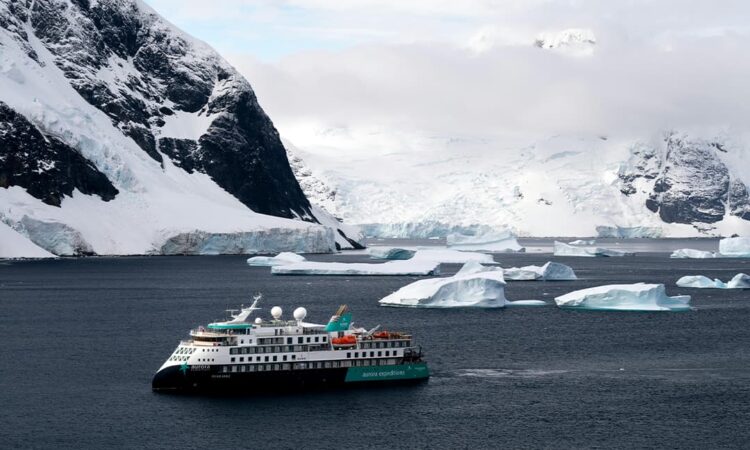For many adventurers heading to Antarctica, the journey across the turbulent Southern Ocean is a rite of passage. While the rewards of reaching the icy continent are immense, crossing rough waters can challenge even seasoned travelers. Seasickness is a common concern on the way to Antarctica, as the Drake Passage and other southern seas are known for their unpredictable, choppy waters. For those planning to travel by ship—whether on an expedition vessel or as part of specialized trips to remote islands like Peter 1st Island—knowing how to manage and prevent seasickness can make the journey far more comfortable. Here are some tried-and-true strategies to help you conquer seasickness and enjoy your Antarctic adventure to the fullest.
Understanding Seasickness
Seasickness occurs when your inner ear senses movement (caused by the rocking of the ship), but your eyes do not register it. This sensory conflict can lead to dizziness, nausea, sweating, and general discomfort. The key to avoiding seasickness is to help your body adapt to the ship’s movement, and fortunately, there are several ways to achieve this.
1. Choose the Right Cabin Location
Where you stay on the ship can make a big difference. Opt for a cabin in the middle of the ship, ideally on a lower deck, where there is less movement. Cabins toward the front (bow) or back (stern) of the ship experience more rocking, which can make seasickness worse.
Tip: If you start to feel unwell, try moving to the center of the ship or an area with a clear view of the horizon, as this can help stabilize your sense of balance.
2. Look at the Horizon
When your body is in motion but your eyes don’t perceive it, your brain can become confused, leading to nausea. By looking at the horizon, you provide your brain with a stable visual reference, which helps to reduce the disorienting effect of the ship’s rocking.
Tip: If possible, spend time on an open deck or near a window with a clear view. Focusing on the steady horizon rather than the interior of the ship can help your body adjust to the motion.
3. Use Over-the-Counter Medications
There are several over-the-counter (OTC) medications specifically designed to prevent and reduce seasickness. Common choices include meclizine (Dramamine) and dimenhydrinate, which work by reducing the symptoms of nausea and dizziness. These medications are most effective when taken before symptoms start, so consider taking them an hour before setting sail.
Note: Some seasickness medications can cause drowsiness, so be sure to follow dosage instructions and avoid activities that require full alertness. If you are part of a special expedition to places like Peter 1st Island, consider planning your medication schedule in advance, as seas may be especially rough in certain stretches.
4. Try Natural Remedies
Many travelers swear by natural remedies to reduce seasickness. Ginger, for example, is a well-known natural remedy that can be taken as ginger tea, ginger ale, or in supplement form. Peppermint is another option, as its soothing properties can help settle the stomach. Acupressure wristbands, like Sea-Bands, apply gentle pressure to points on the wrists, which some people find helpful in preventing nausea.
Tip: Carry ginger candies or peppermint gum with you to help ease nausea. Some ships also have ginger tea on hand, which can be a comforting, calming option.
5. Stay Hydrated and Eat Lightly
Dehydration and an empty stomach can make seasickness worse, so it’s important to stay hydrated and avoid heavy meals before and during your journey. Eating small, bland snacks, like crackers or toast, can help settle your stomach. Avoid greasy, spicy, or acidic foods, which can exacerbate nausea.
Tip: Drinking water consistently and keeping snacks like dry crackers or plain rice cakes nearby can help keep your stomach settled and reduce the intensity of nausea.
6. Avoid Triggers
Certain factors can increase your susceptibility to seasickness. For example, reading or staring at your phone while the ship is moving can make you feel dizzy. Similarly, strong odors, such as those from fuel, food, or perfumes, can exacerbate nausea. Fresh air and focusing on the horizon are usually much more effective for preventing motion sickness than being indoors or in confined spaces.
Tip: Spend time in fresh air as much as possible, and avoid activities that require close-up focus, such as reading, during rough seas.
7. Get Plenty of Rest
Fatigue can weaken your body’s ability to cope with seasickness, so aim to be well-rested before your journey. If you feel seasick, lying down and closing your eyes can help, as it reduces sensory input to your brain. Some people find that napping or resting in a dark, quiet area helps to relieve symptoms faster.
Tip: Take advantage of rest time onboard, especially when the seas are calm. Adjusting to life on a ship can take a few days, so allow yourself time to adapt and get the rest you need.
8. Seek Support from Fellow Travelers
Seasickness is very common among those heading to Antarctica, and you’re likely to meet others who are experiencing the same discomfort. Sharing your experiences and tips with fellow passengers can be both comforting and helpful. Crew members are also well-versed in seasickness remedies and are often more than willing to offer guidance.
Tip: Don’t hesitate to reach out to other passengers and crew. The Antarctic community is friendly and supportive, and you may find helpful recommendations from those with previous experience.
Final Thoughts: The Reward of Reaching Antarctica
The journey to Antarctica is no small feat, but the reward of experiencing its breathtaking landscapes, incredible wildlife, and rare places like Peter 1st Island make every moment worth it. While seasickness may be an obstacle on the way, with the right preparation and a few effective strategies, you can minimize discomfort and enjoy the journey.
Take comfort in the knowledge that many before you have braved these rough waters to reach the southernmost continent, and the stunning sights awaiting you make the journey truly unforgettable.
